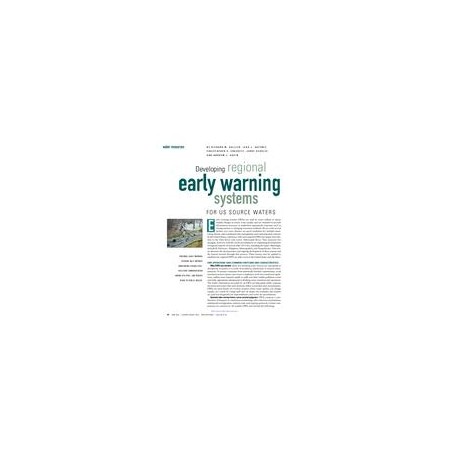No products
 View larger
View larger
AWWA JAW60117
M00002734
New product
AWWA JAW60117 Developing Regional Early Warning Systems for U.S. Source Waters
Journal Article by American Water Works Association, 06/01/2004
Gullick, Richard W.; Gaffney, Leah J.; Crockett, Christopher S.; Schulte, Jerry; Gavin, Andrew J.
Full Description
Drinking water supplies drawn from raw water sources are susceptible to deterioration in quality caused by accidental, intentional, or natural contamination events. Early warning systems (EWSs) provide utilities with extensive monitoring feedback and near real-time data to guide response decisions and safeguard supplies. On riverine systems, where water quality can change rapidly, multiple monitoring stations may be needed and communication and management operations may be coordinated among many utilities, creating a regional EWS. Previously, the only regional EWSs in the United States were on the Ohio River and the Lower Mississippi River. Recent years have seen the development of regional EWSs on several U.S. rivers, including the Upper Mississippi, Schuylkill, Delaware, Allegheny, Monongahela, and Susquehanna. Although each EWS has been tailored to meet system-specific needs and limitations, these systems share the common goals of providing prompt notification of significant watershed events, disseminating information and tools to aid water supply decisions, and improving communications among water suppliers, emergency responders, and users. The successful development of these regional systems depended on key steps that planners of prospective EWSs may want to emulate. These included early and extensive involvement of key stakeholders (particularly the participating water suppliers), identification of a capable organization to serve as the coordinating entity, adoption of a phased approach that could be expanded over time, and procurement of adequate funding to ensure system startup and sustain operations.
In stock

